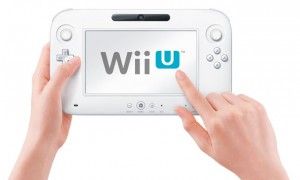Nintendo leaps ahead of competitors with Wii U launch

December 5, 2012
And they’re off!
While Sony and Microsoft remain content with their current console’s marketplace spot, Nintendo will take an early lead in the race to the next generation of home video game systems with the release of its new system, the Wii U.
But has Nintendo started the race early to capture gamers who are begging for a new console, or does the Wii U truly improve upon its predecessor’s downfalls?
Advertisement
Regardless of whether it’s the best thing to happen to video games since Mario, consumers have not been hesitant to buy this device. Nintendo has sold more than 450,000 units since its Nov. 18 nationwide release, according to the website computerandvideogames.com.
This number isn’t shocking considering the Wii sold more than 1.25 million units in the first three months it was on store shelves, but one reason the Wii sold so well was the innovation it brought to games and its appeal to an older generation.
Now the Wii U is out, and it seems like Nintendo put a fresh coat of paint on a system that, while it may have sold 20 million more units worldwide than the Playstation 3 and XBOX 360, quite frankly used a gimmick to accomplish its sales.
Nintendo talked a big game for the system’s release with claims such as “19 times more powerful than the PS3,” and one can validate the statement with further review of the system’s specs and some of its software.
There are two different versions of the Wii U — the basic and deluxe edition. According to computerandvideogames.com, the basic Wii U comes with 8 GB of internal memory and the deluxe comes with 32 GB. Striking differences quickly surface if this gets compared to the 500 GB the PS3 starts with and the XBOX 360’s 120 GB; and there are already striking differences between competitors.
The internal memory can be upgraded with an external hard drive, but the least Nintendo could do was release a system to contend with previous generation consoles’ internal memory without requiring any extra purchases.
However, judging by some games Nintendo is teasing to launch for the system, it is clear the Wii U has upgraded graphic capabilities. Even still, this doesn’t say much when one considers how far behind the Wii was graphically when compared to the XBOX 360 and PS3.
Advertisement*
Much like the first Wii, the deluxe Wii U will be bundled with a launch title to keep hungry Nintendo fans at bay.
The game is called Nintendo Land and, just as the name implies, puts the player in a theme park based on all the greatest Nintendo games created. From there, the player chooses to play Nintendo-themed mini games from classics such as Luigi’s Mansion, Metroid and Donkey Kong.
The draw to Nintendo Land is the multiplayer action it allows and the use of new hardware, which is a tablet-like device one player can use during gameplay.
In all of the games the player using the tablet device will have a different objective than the other players, whether it be working with them or against them.
This gives players the option to experience games in a myriad of different ways and allows for five-player action but seems to be a gimmick used by Nintendo to draw kids who have seen their mom and dads with an iPad and want one of their own to play games on.
Speaking of games, now that the system has enhanced processors, the Wii U will now be able to receive some decent third-party support from other game developers, something the Wii desperately struggled to do.
Critically acclaimed games such as Batman: Arkham City and Darksiders 2 will now be available on a Nintendo console, which I’m sure many fans will be pleased to hear.
This is a smart Nintendo move, considering the Wii’s lack of third-party support practically killed its appeal among hardcore gamers. However, it almost seems like it’s too little too late.
In the next year to two, Sony and Microsoft will have moved on to bigger and better things with their next-generation consoles, and it almost seems like Nintendo will yet again be stuck with a system for which no third-party developers want to make games.
Nintendo banked on motion controls rather than graphics to sell its system, and the company will do just fine for now with old and young gamers’ support. However, it does so at the cost of most other gamers outside of those two demographics.
As time goes on and successes such as Angry Birds become king, Mario and friends may soon be on the streets begging for work.
Advertisement








